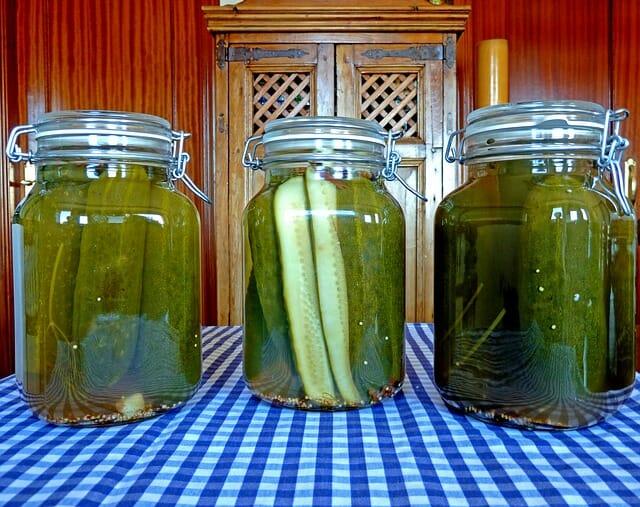I’m all for the idea of learning from books and online articles. Canning how-to’s are great, especially when published or sanctioned by trusted sources. In fact, when in conversation with someone about a food preservation question, my first response to a conundrum is often, “What does the Ball Book say about it?”
But the publications don’t include all the secret tricks. My theory is that they don’t have to. Consider the conditions under which food experts develop and test methods and recipes: modern spacious kitchens with state-of-the-art equipment, and plenty of time to get the job done.
Out on the homestead, we don’t always have a test kitchen and staff at our disposal, and we need all the little tricks we can get to save us time and effort when putting up the harvest. Here are five of my favorites.
1. Use a salad spinner to dry vegetables after blanching. I learned this in the training I underwent to become a volunteer for the Maine Master Food Preserver Program, and always pass it along when I lead workshops. There is usually a broad spectrum of skill level among workshop participants, from those who have been preserving food for years and want to brush up on the latest techniques to those who have never touched a canner.
Discover More Than 1,000 Secrets To Off-Grid Living!
But to a person, participants are surprised and pleased by how easy and efficient it is to dry vegetables in a salad spinner. This technique gets more water out of vegetables than air-drying in a colander and is much easier than patting dry with towels, resulting in a superior finished product with far less effort and fuss.
2. Use a straw to suck air out of zip-top bags. The bottom line when freezing vegetables is that the less water and air between the product and the container, the better the end result will be. There are lots of ways to reduce air from containers, ranging from high-tech vacuum sealers to pressing it out with your hands. The former can be expensive, especially when you consider the specialty containers and bags that must be purchased and usually cannot be reused. The latter leaves some air in the bag. My way is easy, cheap and efficient. I use a large-diameter pliable straw, like the kind you get at fast food places. After packing the food into the zip-top bag, I close it most of the way, insert the straw in the small remaining opening, and simultaneously suck air, slide the straw out, and ease the zipper top closed. It takes a little practice to get it exactly right, but it works great.
3. Keep jars warm in the canner. This is another gem from my Master Food Preserver instructor. A paucity of counter space in her kitchen forced her to get creative, and she developed the habit of setting her clean jars in the cannerful of water while it heated. This genius idea allowed her to keep the jars hot and out of the way at the same time. Although I have a large kitchen and don’t need this method to save counter space, I use it every time anyway. It’s the best way to keep jars hot before filling, which helps reduce jar breakage and can encourage a good seal.
4. Use a flexible plastic knife for removing air bubbles. Official directions recommend using the opposite end of the headspace measuring tool that comes with canning kits, but I prefer not to. There is nothing wrong with using the headspace tool, but I don’t like flipping it back and forth and holding one end that’s been in the product while I use the other. I also don’t like its lack of pliability. I prefer instead to use a thin disposable plastic knife such as the type they give you at fast food restaurants. My favorite thing about these knives is that they are a little flimsy, allowing them to bend slightly around the inner curvature of the canning jar and perform nicely as bubble removers. The books do often specify to avoid using a metal utensil for this task but do not always say why. The reason is because metal can scratch hot jars, which could possibly result in breakage. Although the chance of that happening is slight, why risk it?
Bonus: Use Canning Water to Kill Weeds.
This one isn’t exactly a trick to make preserving the harvest easier per se, but having your water do double duty might help you feel better about spending long hot hours on your feet over boiling kettles. After jars are removed, I lug the cannerful of hot water outdoors and pour it onto weeds instead of pouring it down the drain. Be super careful with this one, using potholders and taking great care. And remember that 200-degree water is going to kill everything, so don’t even consider pouring it on weeds that are growing in the flower bed or between your rows of broccoli or tomatoes. This technique is to be used on weeds growing on walkways and driveways, or in and around woodsheds, or out from under decorative mulch.
These five tips are good ways to save a little time and effort while canning, end up with a better quality product, and kill a few weeds in the process.
What would you add to our list? Share your tips in the section below:
 Off The Grid News Better Ideas For Off The Grid Living
Off The Grid News Better Ideas For Off The Grid Living




